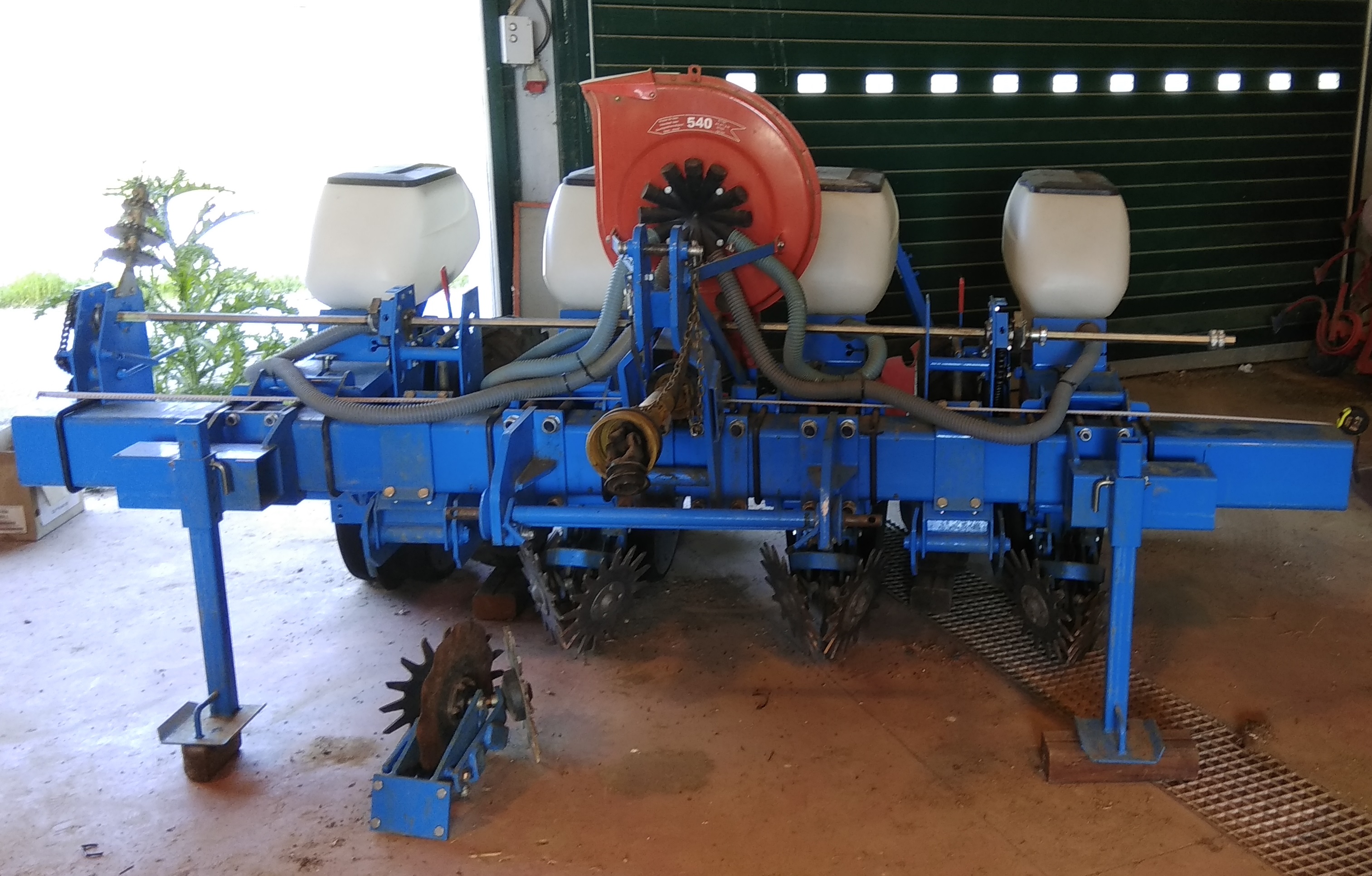Laboratory + Instruments & Agricultural machines + Farm + Constructions + Equipment
Monosem NX2 no till planter

The ΝΧ metering unit is the result ofthe know-how and experience of MONOSEM in the field ofdepth control with discs in Europe since 7989 with the NG Plus. The ΝΧ 2 version has a new parallelogram with rapid pressure adjustment and the Monoshox@.eu option. When working, the two down pressure springs press the unit down on the ground and the Monoshox@.eu shock absorber minimizes row unit bounce in the same manner as shock absorbers on a car. This planter is designed for demanding farmers and contractors looking for a versatile precision planter capable of working in difficult and /ow-ti/1 conditions with high qua/ity planting. So if you are looking for a heavy-duty, reliab/e and precise planter, choose the ΝΧ 2.
General information
The Laboratory of Farm Mechanization was founded in 1995. It covers the student education as well the research on farm mechanization. It covers the description, design, construction and testing, use by the farmer and management of machinery and equipment used in crop and animal production as well as in the first processing of the products at the farm level.
Laboratory content
The laboratory covers a wide range of applications of the Mechanical Engineering in Agriculture. It covers basic engineering subjects like mechanics, material properties and strength, soil mechanics, .manufacturing tools, internal combustion engines, machinery and equipment used in farm work as well as their management. The laboratory has facilities in the main building in Fytoko and in the Velestino Farm. The laboratory has develop different sections dealing with specific part of the research and education activities and are described in the following.
Laboratory sections
A small workshop covers the basic need of the laboratory for light constructions. The existing facilities are divided in sections.
1. Soil physical properties It covers the requirements of measuring the mechanical properties of the soils like soil strength in compaction, in shear and in penetration, measurement of plastic limits, soil aggregate distribution and strength, soil temperature and water content measurements in the field etc.
2. Strength of materials and physical properties of biological material. Analysis of strength of material using an electrical tensometer and other properties like friction.
3. Measurement of forces and power during field work. An instrumented tractor can measure pulling forces in three dimensions, linear velocity of the tractor, fuel consumption, PTO torque and linear velocity, and implement working depth. There is also an electrical PTO testing dynamometer.
4. Farm machinery section. It covers the field machinery with some prototypes developed through the research projects like a modified subsoiler with shallow tines, a strip tillage equipment etc This section covers the sprayer testing facilities. There are under development a soil bin and a pump testing plant.
5. A farmer health and safety department was developed through a programme funded by the ministry of Education. Instrumentation for measuring noise and vibration in tractors as well as equipment for farmer protection from chemicals are available.
Research activities
The laboratory research activities of the last ten years are
- Collection of crop residues and use for energy production. Funded by the Greek Ministry if Education and the research committee of the TEI of Larissa
- Comparison of methods of silage production suitable for small farms. Funded by the Greek Ministry if Education and the research committee of the TEI of Larissa
- Vinasse recycling in agriculture 1992093 Funded by the Hellenic Distileries and Spirits S.A.
- Vinasse recycling in agriculture Funded by the Greek Ministry of Labour and the European Social Fund
- Comparison of Ploughs imported and locally produced. Funded by the Greek Ministry of Labour and the European Social Fund
- Improvement of the disc harrow produced by the company Sons of A. Sabris. Funded by the Ministry of Research
- Tillage methods for cotton crop establishment Funded by the Ministry of Research
- Study of the traditional farm machinery and tools used in Thessalian traditional agriculture. Funded by the Research committee of the University of Thessaly
- Cotton crop cultivation in single and twin rows. Funded by the Research committee of the University of Thessaly
- Design and construction of instrumentation of a tractor to measure forces and power during field work. Funded by the Research committee of the University of Thessaly
- Improvement of a subsoiler Funded by the Ministry of Research
- Study of the machinery used for cotton cultivation in ridges Funded by the Ministry of Research
- Health and safety of work in agriculture Funded by the Greek Ministry of Education
- Developing data basis and algorithms for precision agriculture application in cotton crop.
Hydraulic multiple soil penetrometer
 The instrument is designed and constructed in our laboratory. It consists of five ASAE standard cones forced into the soil with two hydraulic cylinders. The instrument is attached on the three hitch point of tractors and powered through the hydraulic system. Data are streamed to A/D cards and stored to a portable PC with an appropriate software designed also in our lab.
The instrument is designed and constructed in our laboratory. It consists of five ASAE standard cones forced into the soil with two hydraulic cylinders. The instrument is attached on the three hitch point of tractors and powered through the hydraulic system. Data are streamed to A/D cards and stored to a portable PC with an appropriate software designed also in our lab.









